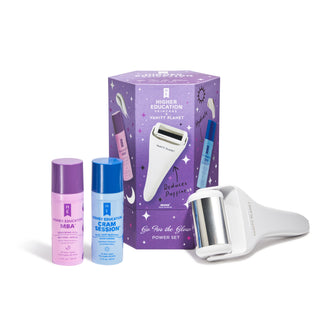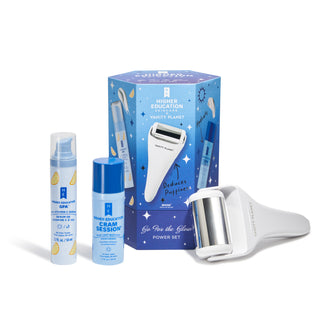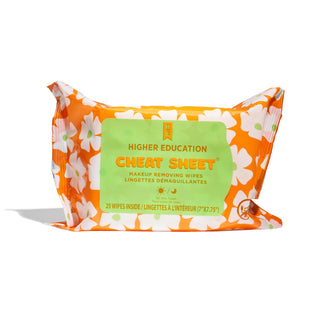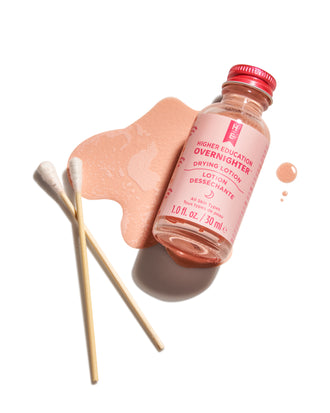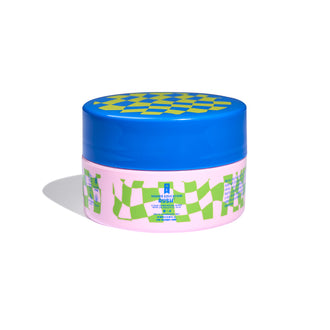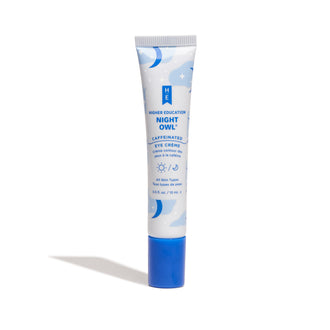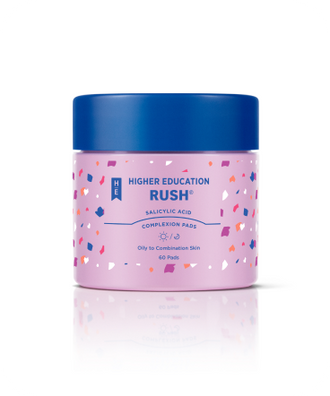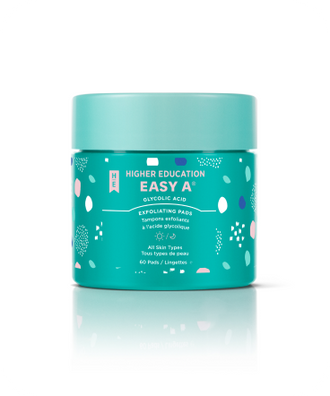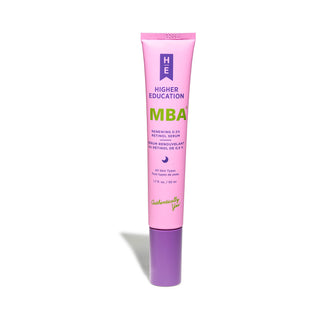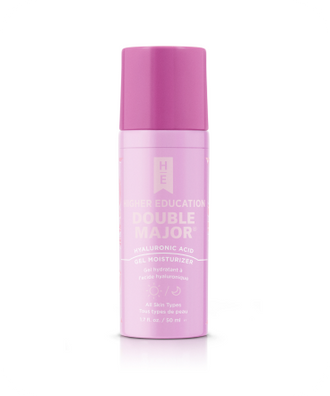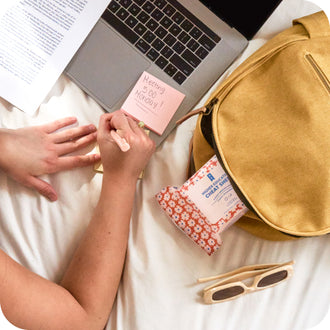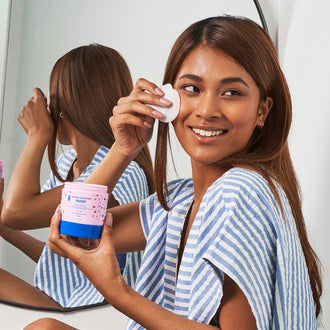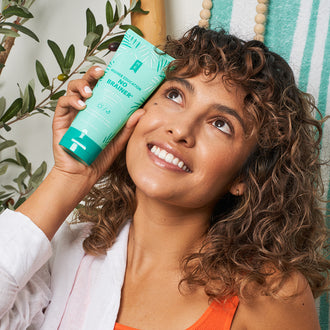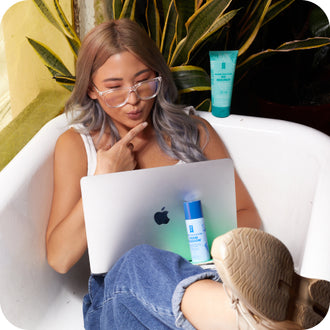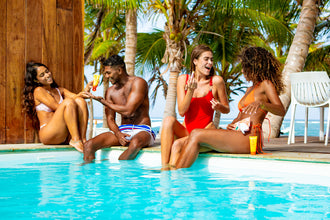
When I met you in the summer…
I find it amusing that I really only begin to think about the harmful effects of the sun as the first hints of summer start to reveal themselves (hello summer solstice) … I have fewer clothes on, which means more of my skin is exposed, and if I am being totally honest, there is just something that screams summertime when I have a bit of that sun kissed glow (true story from this biologist who 100% knows better!). Those sun rays are a reminder that the summer season is upon us & it’s muy importante you are educated about UVA & UVB radiation all summer 19’.
Here comes the sun…
SO, it all begins with the sun; Sunlight sends a spectrum of radiation to us even on the cloudiest and rainiest of days. The sun produces both UVA & UVB rays-both of which can cause damage to the skin. On one end of this spectrum is Infrared radiation; that’s the lovely thing that heats us up (It’s getting hot in here…). On the other end of the spectrum, is where UV radiation lives, and nothing within this range is visible to the human eye.
All radiation (AKA: rays) have a unique range of wavelengths, which is how they are differentiated among their types and classified. These wavelengths are measured in nanometers (nm for short) and for perspective, a nanometer is one BILLIONTH of a meter! UV wavelengths are further classified into short, medium and long… Seems like a no brainer, right? Hold up, let me break it down…

FYI: not all UV radiation makes it to the Earth’s surface. Short wavelength UVC (200 to 280 nanometers), while one of the most damaging types of UV radiation, is completely filtered by the atmosphere so it never has an opportunity to touch our skin. *sigh of relief*
In order to properly protect yourself from these sunspot-causing, skin-damaging bad boys - you gotta stay in the know. It’s important to understand the difference between UVA & UVB rays and how each are responsible for damaging the skin when purchasing sun-protection products.
[I’m gonna] soak up the sun - *UVA Rays*
UVA radiation, the longest wavelength of the three (320 nm to 400 nm), is responsible for about 95% of the UV rays that reach our skin.
There are two types of UVA rays: UVA1 wavelengths range from 340 nm – 400 nm and UVA2 ranges from 320 nm -340 nm. UVA rays are present ALL year-round rain or shine as long as it is daylight. As the longest wave on the UV spectrum, 80% of UVA rays penetrate to the dermis of the skin making them responsible for photo aging. It’s these frenemies that degrade collagen and elastin, much of the precious scaffolding that gives us our firm, elastic, tight and wrinkle free skin. Unlike UVB, you can’t feel UVA radiation (the silent killer ????) damaging your skin (no sunburn).
FYI: UVA radiation is primarily responsible for aging us faster and penetrates clothing and glass, so if you spend most of your time indoors, but have that office near a window you may want to search “truck driver sun damage” and check out those images (kind of spooky, I know).
ICYMI: Love the tanning bed to achieve that beach babe glow? No bueno gals… The bulbs in tanning beds utilize UVA radiation and because these rays penetrate both the epidermis and the dermis, causing more opportunities for DNA damage… opt for a spray tan or self-tanner to be safe. Check out our blog The Art of Self-Tanner: 8 Tips for your Best Sunless Tan.
Blister in the sun– *UVB Rays*
Enter: UVB radiation (medium wavelength) … the rays we most commonly associate with that sun kissed glow but are ultimately responsible for 96% of our nasty sunburns. UVB rays become the life of the party during the summer and their intensity varies according to variables such as geographical location, time of day and season.
UVB radiation has a much smaller wavelength range than UVA, 290 nm to 320 nm. Although UVB does not penetrate the skin as deeply, reaching only the epidermal layers, or is as ubiquitous as UVA rays, UVB light is very powerful. It’s UVB radiation that’s directly responsible for those sunburns you’re healing for days on end and other visible discolorations to skin’s surface (think dark spots and uneven skin color) as well as DNA damage that can lead to skin cancer! UVB is also present year-round but varies to a much greater degree based on time of day (10 am – 4 pm), geographic location (high altitude vs. low altitude, distance from the equator) and season (in the summertime when weather is hot…)!
Both UVA and UVB rays reflect from sand, water and snow, and check this out, the snow reflects 80% of UVB rays, making sun protection just as important in the winter and cold climates!

All summer long (and other seasons too)
These differences in wavelength become especially important when considering your sun protection and the active ingredients in the products you choose. Specific sunscreen actives demonstrate peak performance for a range of wavelengths, which is why the sun protection you use should indicate “Broad-Spectrum Protection”.
Look for ingredients such as zinc oxide and/or titanium dioxide as these ingredients act as physical sun blockers. In fact, HIGHER EDUCATION SPRING BREAK® Oil-Free Sunscreen SPF 30 is the perfect back pocket accessory to keep you protected while you soak up the sun!
FYI: Your Lips can also be affected by these harmful rays! Yes, those precious lips can receive the wrath of Mr. UVA & UVB as well. HIGHER EDUCATION MAKE OUT READY® Vegan Lip Balm SPF 15 is my fave for protected and ultra-soft lips. It contains SPF 15 and packed with vitamin E, plant extracts, and antioxidants, this lip balm helps protect lips from damaging UVA and UVB light.
ICYMI: UVA and UVB rays can be very powerful and damaging during the summer months (& always) which is due to the excessive amount of time spent in the sun in these months. UVA & UVB rays play an important role in many conditions such as premature aging, skincare, and eye damage. It’s important to stay educated and protected when you’re getting rowdy this summer. Whether you’re BBQing on the beach all day or grabbing iced coffee on an overcast summer day, practice sun-safety & have safe sun!


